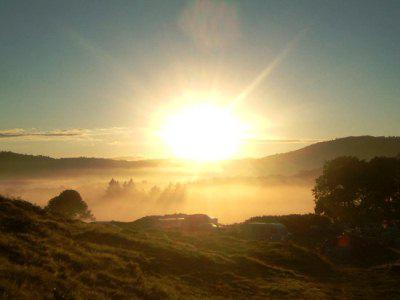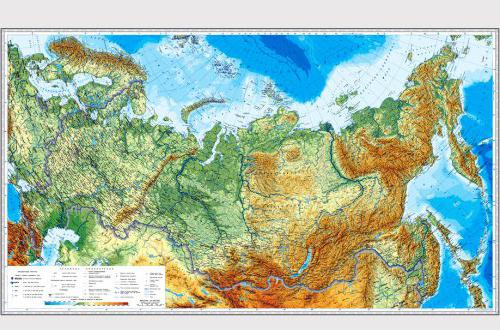In cartography, geography, there has long been a concept of cardinal points. They are necessary for determining directions on the terrain and on the map, are used in construction, transport, and help in other activities. How to determine where north, south, west, east? We will find out what the sides of the horizon are, how to navigate them.
Main directions
In ancient times, man learned to determine his position on the ground, noting that every day the sun rises due to the horizon in the east, and sets in the evening in the west. The ability to navigate helped our ancestors find their way home, hunt, and cultivate plants. The principle of dividing space into parts was an important stage in the study of the world around us. The main parts of the world in ancient times received their current names (north, south, west, east). Over time, instruments for observing the Sun and planets, measuring devices became more advanced. Scientists have found that the North and South geographic poles are two opposite points at which the imaginary line - the earth's axis - intersects the surface of our planet.
Determine where north, south, west, east?
Directions to the east and west are associated with one of the movements of the Earth - rotation around its axis. The sun appears in the morning due to the horizon in the east, reaches zenith in the afternoon, leaves in the evening on the other side of the sky and sets in the west. There are differences in the position of the Sun at different latitudes associated with the inclination of the earth's axis. At noon, the equator is located directly above the head. In winter, in the Northern Hemisphere - it moves to the south, in summer - to the north. In summer, sunrise can be observed in the southwest, in winter - in the southeast. In polar and circumpolar latitudes, a polar night lasts six months, the luminary does not rise because of the horizon. And when the sun does not set for six months in a year, a polar day sets in . In the northern region is the magnetic pole, towards which the compass needle is turning. In the opposite part of the planet is the southernmost mainland - Antarctica. You can determine the directions, if one of them is known, using a simple method. You need to stand so that your face is facing north. Then behind the back will be south, on the left hand - west, on the right - east.

Mutual position of the main and intermediate sides of the horizon
There are main directions - north, south, west, east - which are complemented by intermediate ones. Such a division is very convenient, it allows you to more accurately determine the position on the terrain, find objects on maps and topographic plans. For example, northeast is the side of the horizon between the north and east directions. Designations are introduced on maps, plans, dials, textbooks, and reference books using the first letter of a Russian or Latin name. There is a more detailed division of the sides of the horizon. So, between the directions from and to are located north-north-east (north-east) and east-north-east (north-east).
Cardinal points on plans, maps and the globe
In the old days, sailors and travelers were guided by maps on which the north could be down and the south up. The knowledge of the Earth ’s surface was imperfect, many geographers were mistaken in drawing objects on plans and maps. There were so-called "white spots" - unexplored areas. As a rule, on modern geographical plans and maps in the upper part is north, below is south, on the left is west, and on the right is east.

The same principle was used when creating the globe. Its upper half is the Northern Hemisphere, the lower half is the Southern Hemisphere. To the left of the initial meridian is the Western, to the right - the Eastern Hemisphere. The place where the ball is attached to the stand is the South Pole, the opposite point is the North Pole. It is easy to find any geographical object if its coordinates are known. North, south, west, east - the main directions, as well as latitude and longitude on the map and globe. Continents, oceans, plains, mountains, seas, cities and other geographical objects that are above the equator, have northern latitude, below the 0 ° parallel - southern. Objects to the left of the initial meridian have west longitude, to the right - east.
Compass - a device that determines the direction
A device equipped with a two-color magnetic arrow helps to find the sides of the horizon and navigate the terrain. Usually it rotates freely in the center of a round casing. The device used to determine directions is a compass. North, south, west, east are indicated by letters on the scale of this device. The red tip facing the division "C" or "N" indicates the north. The opposite part of the arrow is directed south. To the left of this axis is the west, to the right is the east. Inside the compass there is a scale with numbers from 0 to 360 ° located clockwise. The division price in different devices may vary. Using a compass allows you to:
- Find out where each of the main parts of the world (north, south, east, west) is located.
- Identify all intermediate sides of the horizon.
- Find azimuth - the angle between an object on the ground and a direction to the north.
The compass is necessary for representatives of many professions - sailors, pilots, military, builders, geologists, as well as tourists and travelers. There are different types of this device, helping to navigate the Earth's magnetic field lines.
Directions in the area (north, south, west, east)
You can determine your location by celestial bodies, natural phenomena and signs of nearby objects. At noon, when the Sun is in the south, the shadows from vertically arranged objects are directed with their peak to the north. At night, you need to try to find the North Star. The two extreme bright points of the Big Dipper, forming the wall of the Big Bucket, are called Pointers. The straight line, conducted through them, rests directly on the North Star. It is located in the northern half of the sky, belongs to the constellation Ursa Minor.
A good helper for those who get lost is a watch. To find out the direction, turn the dial clockwise to the Sun. An angle is formed between the line leading to the number 1 (13.00 hours), which is halved and a bisector is obtained (it points to the south). Orientation according to local signs:
- a layer of lichens and mosses is thicker on the north side of trees;
- drier soil under stones facing south;
- in winter, on the north side, snow remains loose longer;
- anthills are more often located south of hills, trees, stones;
- the clearings that divide the forest into quarters are oriented from east to west and from north to south (mark their serial numbers on poles, starting from north-west and south-east).
Each method has an error, which must be taken into account on the ground. It is better to use several methods, then the result will be more accurate.